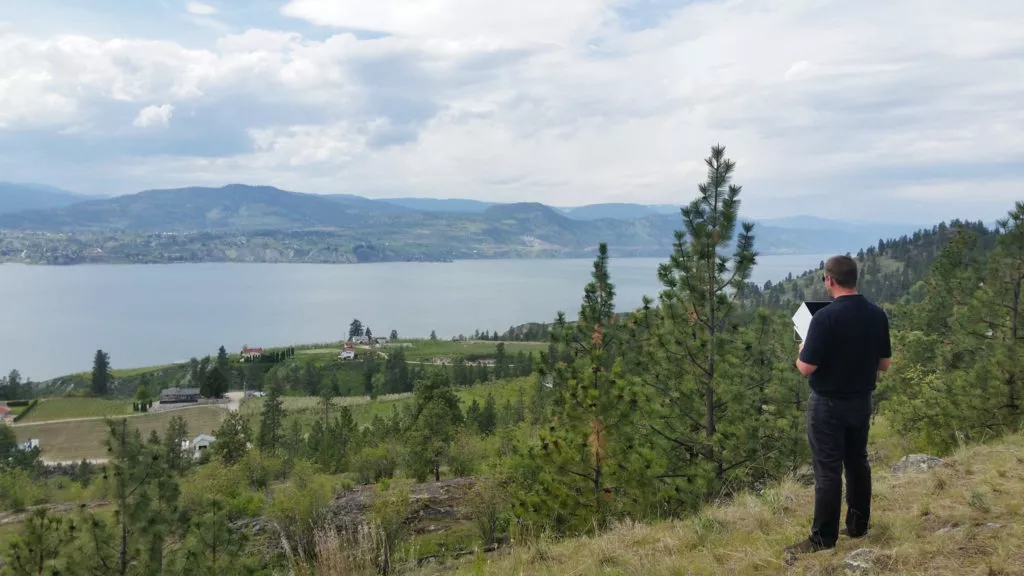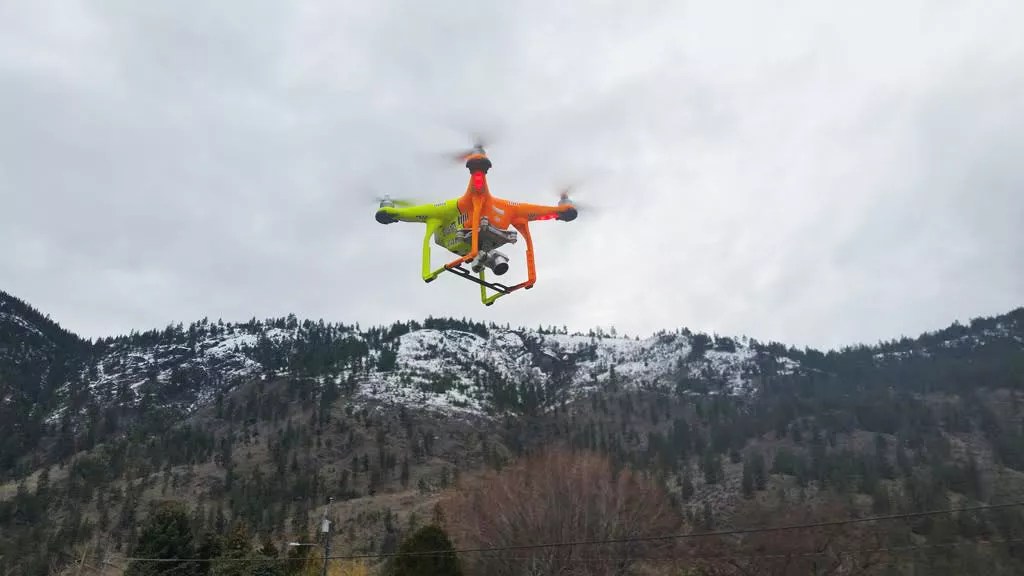Better, Faster Topographic Surveys with Drones and AeroPoints
Osprey Aerial Intelligence, an aviation information company based out of the South Okanagan Valley in Canada, are using their AeroPoints™ to produce accurate topographic surveys for local land developers.
Drone solutions for land developers
The majority of Osprey’s clients are land developers focused on establishing local vineyards, wineries, and residential developments.
These days, most of the flat, accessible land in the South Okanagan Valley is already developed. As a result, developers are looking further afield, and are increasingly interested in the mountainous terrain above the valley when scouting for new project sites.
Osprey has discovered that aerial surveys, captured by drone, are a cost-effective and simple way to provide land developers with the topographic data required to assess the potential of hard-to-reach sites.
“We recognized the benefits of drone technology for various industries and saw a niche in our area to get a UAV business started” said Dax Kent, the company’s president and CTO. However, Kent and his colleagues have learnt that the accuracy of aerial surveys is dependent on an effective ground control system.
Sorting out ground control
In searching for the right ground control solution, Osprey really did their research.
Kent and his team knew they needed to invest in a system capable of delivering the kind of accuracy their clients were demanding. They were on the verge of purchasing a full RTK survey base and rover setup when they happened to read about AeroPoints on sUAS News.
According to Kent, they immediately recognized AeroPoints as the perfect technology to solve their accuracy problems—and the cost was a drop in the ocean compared to the traditional alternatives they’d been considering. “We pulled the trigger on the AeroPoints and never looked back,” he said. “For us, AeroPoints are the ideal solution for providing GCP data on a survey.”
“AeroPoints save us both time and money compared to traditional rover/base methods. This helps us keep costs down for our clients.”
The benefits of using AeroPoints
Osprey ordered their first set of AeroPoints in October 2016 and have been busy putting them to work on a number of land development and subdivision planning jobs.
When asked about the key benefits of using AeroPoints, Kent reels of a laundry list, including accuracy, simplicity, and seamless integration with the Propeller platform they use for data processing and 3D site visualization.
Kent says that the accuracy of their data has improved significantly, especially in the Z coordinate (altitude). So much so that Osprey have begun recapturing surveys completed before they started using the combination of AeroPoints and Propeller.
In addition to accuracy, Kent and his team love the one-button operation of AeroPoints and the ease of deployment. Deciding on the best positions for AeroPoints is now a standard part of the preplanning that goes into all their jobs. These positions are marked as waypoints on a handheld GPS, enabling the team on the ground to lay each AeroPoint exactly where they planned. When the survey is complete and it’s time to collect up the AeroPoints, they simply follow the GPS waypoints in reverse.
After each Osprey flight, AeroPoints automatically upload their position data to Propeller. The complete 3D model is then available online for visualization and analysis within 24 hours.
“Propeller has been rock solid and gives our customers a very easy-to-use interface,” said Kent. “It delivers additional value for the cost, by allowing clients to view their site in 3D, share that view with others in their team, and carry out essential measuring and planning work right from within the platform.”








